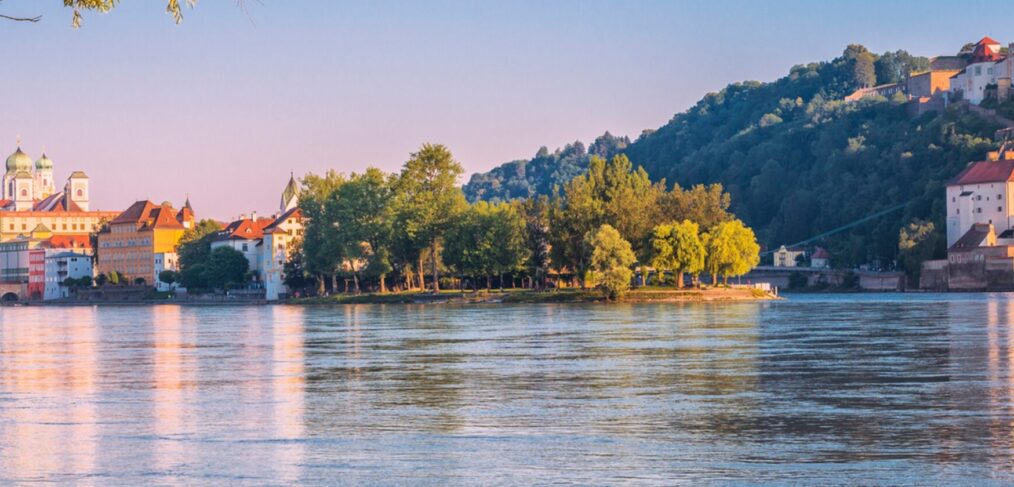
Austria and Summer Cruise 2023 with Philip Carter
As you may be aware Philip Carter is leading a cruise down the Danube River from April 20-23rd 2023. In preparation for this adventure, I’ve taken it upon myself to write about the wine regions that the cruise will be exploring. First on my list is a review of Austria as several days will be spent in this region. As you read through my blog, you should be able to answer the following questions by the end of the read:
- What are Austria’s four main wine regions?
- Name three major white grapes and three major red grapes that grow in Austria.
- What are the three major quality levels of Austrian wine?
- What is Austria’s great dessert wine?
Grape growing and winemaking in what is now Austria dates back to the fourth century B.C., but only in the past quarter century has the country earned a reputation for producing quality wines, specifically some of Europe’s most elegant and best-tasting white wines, both dry and sweet. Its Gruner Veltliners and Rieslings pair beautifully with food, which accounts in part for the recent success of Austrian wines in America. Both chefs and sommeliers agree that these wines work well with nearly any dish, from fish and poultry to most meats. Austria’s wines also hold their own when paired with Asian spices.
The country contains four wine regions: Lower Austria, Vienna, Burgenland, and Styria, all located along its eastern borders. The Danube River and the fertile valley that surrounds it define the northern wine regions, including Lower Austria – which produces 60 percent of the country’s wine – and Vienna, one of the world’s most beautiful cities and the only major city to be a wine region. The two most important of these regions, specialties, and their wine districts are:
- Burgenland: (red and dessert wines) Neusiedlersee, Mittelburgenland, Neusiedlersee-Hugelland
- Lower Austria (white wines) Wachau, Kamptal, Kremstal, Donauland
The main white varietals are:
- Gruner Veltliner (accounts for more than 1/3rd of Austrian grape plantings)
- AutriSauvignon Blanc
- Riesling
- Chardonnay
The main red varietals are:
- Blaufrankisch (Lemberger)
- St. Laurent
- Pinot Noir
Austria largely follows the same criteria used in other European countries, specifically Germany, with regard to wine labeling, although it maintains even stricter control. Grape ripeness and the sugar content of the fermenting must determines quality levels, the three broadest being:
- Tafielwein
- Qualitatswein
- Pradikatswein
The Austrian wine board tastes and chemically analyzes Qualitatswein and higher levels of wine, giving consumers a guarantee of taste, style, and quality. If a label lists a specific grape, the wine must contain at least 85 percent of that grape (US in only 75%). If the label names a wine region, 100 percent of the wine must come from that region (US only 75%). As with German wines, most Austrian wines are white, but, unlike German wines, most of Austria’s wines are dry, with higher alcohol and more body, resembling the wines of Alsace. Graduation of ripeness indicates the amount of residual sugar left in the wine after fermentation. In Austrian wines, it ranges from the very dry Trocken to the very sweet Trockenbeerenauslese.
Graduations of Ripeness
Dry
Trocken
Halbtrocken
Lieblich
Sweet
Tafelwein
Landwein
Qualitatswein
Kabinett
Pradikatswein
Very Sweet
Auslese
Eiswein
Beerenauslese
Ausbruch
Trockenbeerenauslese
Ausbruch, one of the world’s great dessert wines, comes from the village of Rust in Burgenland and has a history that dates back as far as 1617. On par with French Sauternes, German Beerenauslese, and Hungarian Tokay, it’s made with botrytized grapes, primarily Furmint.
Make sure to be on the look out for our next blog post about the other regions that will be explored on the wine cruise!
–Dale Clemence
Assistant Wine Maker at Philip Carter Winery
For more information on the Philip Carter led cruise that travels through Austria among other countries please click on link below, e-mail WineClub@
Question Answers:
- Lower Austria, Vienna, Burgenland, and Styria
- White: Gruner Veltliner, Sauvignon Blanc, Riesling, Chardonnay Red: Blaufrankisch, St. Laurent, Pinot Noir
- Tafielwein, Qualitatswein, Pradikatswein
- Ausbruch
